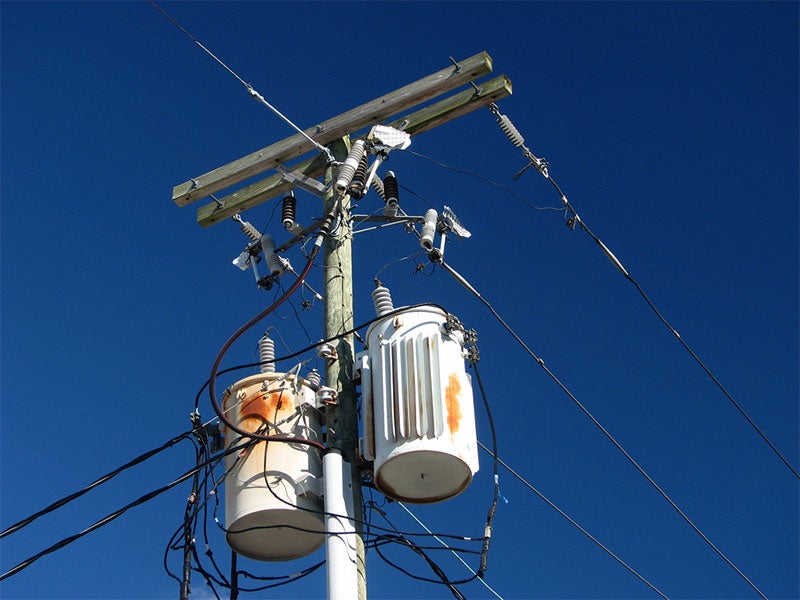Unplugged: Improving Energy Efficiency a Gray Box at a Time
In 2007, we filed a lawsuit challenging the Bush administration’s weak energy efficiency standards for electricity distribution transformers, those gray boxes mounted on utility poles that power all our homes and businesses. The results of that lawsuit are new standards from the U.S. Department of Energy that were published in the Federal Register on Thursday….

This page was published 12 years ago. Find the latest on Earthjustice’s work.
In 2007, we filed a lawsuit challenging the Bush administration’s weak energy efficiency standards for electricity distribution transformers, those gray boxes mounted on utility poles that power all our homes and businesses. The results of that lawsuit are new standards from the U.S. Department of Energy that were published in the Federal Register on Thursday. The standards were updated as part of an agreement settling that lawsuit. Along with Earthjustice, parties to the suit include the Natural Resources Defense Council, Sierra Club and several states.
Electricity distribution transformers reduce the power of electric current from the high voltage in distribution lines to the lower voltages inside our homes, offices, and businesses.
We had hoped the Obama administration would seize the opportunity to strengthen the 2007 standards, but although the DOE significantly improved the standard for “dry-type” transformers typically installed inside larger commercial buildings, the standard for “liquid-immersed” transformers usually installed outdoors barely was changed.
Steven Nadel, executive director of the American Council for an Energy-Efficient Economy and one of our coalition partners, had this to say about the new standards:
The new standard for dry-type transformers is a good step forward and represents a compromise between the positions of the transformer industry and energy efficiency advocates.
However, the final standard for liquid-immersed transformers is very disappointing as it results in little energy savings and represents a continued reliance on 20th-century technology and not the 21st-century technology increasingly being used in other countries.
Although the electricity used by any one transformer is small, the losses add up on a national scale. According to ACEEE, the new standard for dry-type transformers will reduce these electricity losses by 30 percent, while the new standard for liquid-immersed transformers reduces losses only by four percent. We argued for standards that would have cut losses for (the largest) dry-type transformers by about 40 percent and for most liquid-immersed transformers by 15 percent.
Here is what Tim Ballo, Earthjustice attorney who has handled this issue, said about the new standards:
One of the keys to curbing climate change pollution is making our electric grid much more energy efficient.
In the six years since the last DOE standards were issued, China, India, and other countries have increasingly turned to using better grades of steel in their transformers to reduce the power wasted in their electric grids. These better steels can be and are being made in the U.S., and it’s disappointing to see that DOE lacks confidence U.S. manufacturers’ ability to supply the transformer industry with high quality metals.
Earthjustice’s Washington, D.C., office works at the federal level to prevent air and water pollution, combat climate change, and protect natural areas. We also work with communities in the Mid-Atlantic region and elsewhere to address severe local environmental health problems, including exposures to dangerous air contaminants in toxic hot spots, sewage backups and overflows, chemical disasters, and contamination of drinking water. The D.C. office has been in operation since 1978.